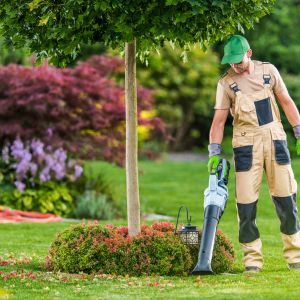Fall in Orchard Park, Western New York, USA, is a time when our village comes alive with the vibrant hues of falling leaves. Homeowners and landscapers alike take part in a community-wide effort to clear their properties, creating massive piles of leaves on the streets. As these leaves are collected and vacuumed away, we see more than just autumn’s splendor; we see an opportunity for savings on next year’s lawn and garden expenses. How? By recognizing the value of leaves to gardeners like you.
Why Are Leaves So Valuable to Gardeners?

Leaves, when integrated into your garden, offer a plethora of benefits:
- Simplicity: They naturally blend with the soil.
- Added Nutrients: Leaves contribute phosphorus and potassium to your soil.
- Microbial Life: They enhance microbial activity in the soil.
- Water Retention: Leaves improve your soil’s water-holding capacity.
- Structural Support: They help in building and stabilizing slopes.
The best part? Leaves are free and readily available! So, rather than sending them to the curb, let’s explore five ways to utilize leaves in your garden:
Lawn Enrichment

Using a combination of shredded leaves and lawn clippings adds essential nutrients to your lawn.
Here’s how:
- Utilize a mulching mower.
- Adjust the mower height to 3 inches.
- Pass the mower over large leaf pieces to shred them.
- Spread shredded leaves up to 3/4 inch deep onto your lawn.
This organic blend will decompose over winter, enriching your lawn without the need for store-bought fertilizers. If you’re looking for a new lawn mower, check out KD Hardscape.
Vegetable Garden Enhancement
For your organized vegetable garden, you can add whole or chopped leaves. Most will decompose during the winter, and any remaining leaves can be mixed in come spring. To prevent leaves from being visible, shred them first. No grinder? A 55-gallon trash can and string trimmer will do the job.
Leaf Mold Creation
Leaf mold is a valuable mulch for your plants, created by allowing wet leaves to break down. Stack leaves in a sheltered area to prevent them from blowing away. Alternatively, create a wire frame to contain the leaves and accelerate decomposition by turning the pile during winter.
Composting Material
Chop or roll leaves into small pieces and add them to your compost pile for winter decomposition. For a more extended storage option, use trash bags or a secluded location to preserve dried leaves, ensuring you have enough “browns” for your compost pile.
Winter Plant Protection

As the temperature drops, safeguard potted plants and non-tropical species by storing them on the north, west, or east side of your home. Stack dried leaves around the pots to provide insulation and protection. Secure pots in windy areas to prevent leaves from blowing away.
Remember, burning fallen leaves is discouraged, as it can harm the environment and your health. Instead, harness the value of leaves by recycling them into your garden and landscape.
For more gardening and landscaping insights, visit Royal Pro Landscaping and explore our additional fall gardening guides. Looking to redesign your yard? Find a landscape designer through our website.
So, don’t discard those fallen leaves; recycle them into your garden and watch your landscape flourish.

